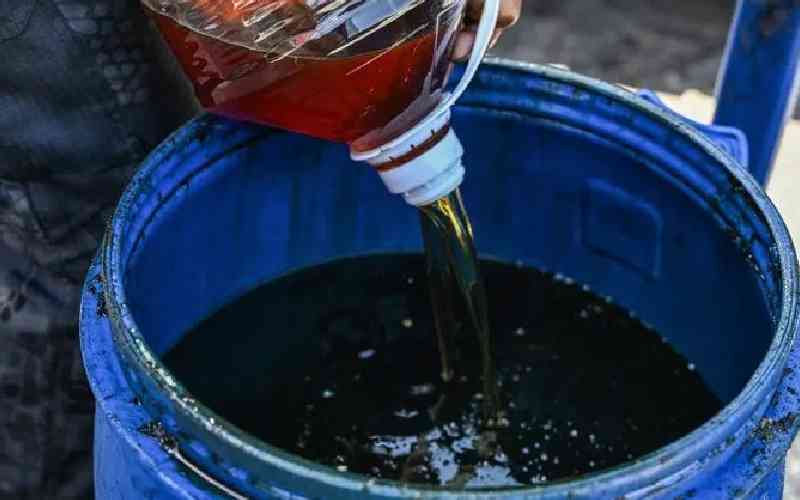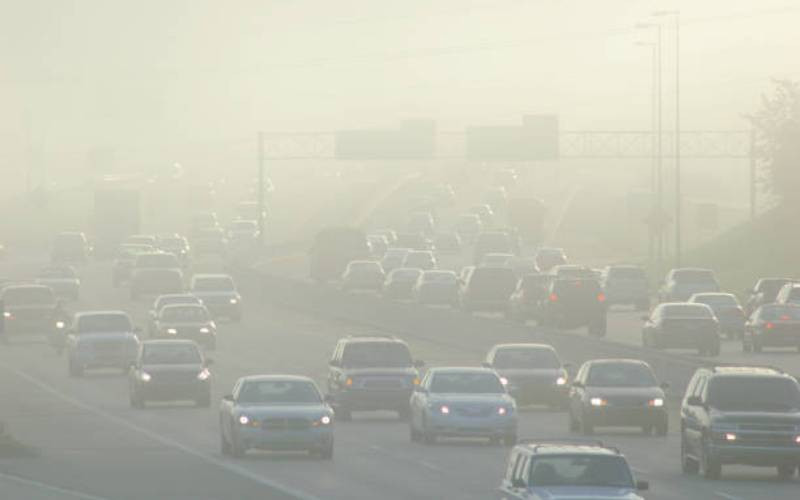Industries have been cited as the greatest source of air pollution.
This cannot be further from the truth. No factory, no matter how careless, would burn 600 tonnes of plastics per day. This is the amount Nairobi County burns in the open everyday.
The impact of this is that thousands of people are exposed to deadly emissions.
To achieve the goal of reducing the number of deaths from air pollution by two thirds by 2030, some elements for the Geneva Action Agenda to Combat Air Pollution were proposed.
To begin with, Kenya should massively reduce open burning of waste. Section 78(1) of the Environment Management and Coordination Act (EMCA) of 2015 requires the National Environment Management Authority (Nema) to design a criterion for ambient air quality standards.
Quality regulations
According to Nema's air quality regulations for open burning of waste: “No person shall cause or allow emissions of priority air pollutants set out under the Second Schedule from disposal of medical waste, domestic waste, plastic tyres, industrial waste or other open burning.”
Ideally, the burning of condemned goods should fall under this category. The Second Schedule covers dust, black smoke, smog, aerosols, sulphur oxides, dioxins and furans.
This group of chemicals is referred to as Persistent Organic Pollutants (POPS) because of their inherent danger to human health and the environment and can cause a host of ailments including cancer.
They are produced as pesticides and industrial chemicals. Dioxins and furans are highly toxic at low levels and will be produced in medium temperature combustion such as industrial processes, incinerators, power plants using waste and the open burning of waste.
Open burning of waste is the single most important source of dioxins in Kenya.
Where does Kenya stand globally? The global community has been mobilised to fight emissions and release of Unintentionally Produced Organic Pollutants (UPOPS) under the Stockholm Convention (SC) on persistent organic pollutants, the Basel Convention (BC) on the trans-boundary movement of hazardous waste and their disposal and the Minamata Convention on Mercury (MCM).
Kenya is a party to the SC and BC and a signatory to MCM. Developed nations have since stopped activities that emit dioxins into the air from industries, incinerators, power stations and open burning of waste.
Why should open burning of waste be stopped urgently?
Although the Stockholm Convention is concerned with persistent organic pollutants as products of incomplete combustion, open burning generates toxic by-products of combustion well beyond chemical substances.
Stay informed. Subscribe to our newsletter
In Kenya, unintentionally produced organic pollutants are released in large quantities. Available statistics indicate that Kenya produces 2,800g toxic equivalents of UPOPS annually.
The very low toxicity makes the emissions environmentally significant. The bulk of the emissions come from uncontrolled burning of waste. This is mainly from municipal, industrial, and healthcare waste, and agricultural practices.
Urban waste
With a population of 45 million, Kenya generates 22 million tonnes of urban waste or about 10,000 tonnes every day. Less than 50 percent is collected and disposed of at dumpsites.
Nairobi generates 4,000 tonnes, with half of that going to Dandora dumpsite. The rest either rots, is eaten by animals or burnt in backyards. Of what goes to Dandora, less than 20 percent is recycled, 50 per cent rots and about 900 tonnes will be burnt at some point.
This makes open burning the largest source of general air pollution. Municipal waste contains 15 percent plastics. For Nairobi, 600 tonnes is plastic waste or some, say, 100 seven-tonne lorries of waste in open burning.
Air pollution contributes toxic residue to water and contaminates land. The World Health Organisation (WHO) says that dioxins and furans are priority chemicals because they accumulate in animal fat.
Many Kenyans do not seem to realise that open burning of waste is illegal.
Where it must be burnt, there are regulations and guidelines. This is especially so because Kenya is a party to the Stockholm Convention, which calls on parties to minimize open burning.
Kenya has received a grant from the Global Environment Facility (GEF) for sound chemicals management and reduction of unintentionally produced persistent organic pollutants from the open burning of waste and thermal disposal of healthcare waste.
Five-year plan
The five-year (2016-2021) project is being implemented by the Ministry of Environment and Forestry, in partnership with national and county government agencies, civil society, private sector and intergovernmental organizations.
Now in its second year, remarkable progress has been made in the project’s implementation. The milestones include completed baseline studies, wide stakeholder consultations and review of policies.
The next project year will involve procurement of healthcare and municipal waste disposal facilities with county governments of Nairobi, Nakuru, Mombasa and Kisumu, and other stakeholders
Ms Mayiani is the Unintentionally Produced Organic Pollutants (UPOPS) Project Manager, at the Ministry of Environment and Forestry
 The Standard Group Plc is a
multi-media organization with investments in media platforms spanning newspaper
print operations, television, radio broadcasting, digital and online services. The
Standard Group is recognized as a leading multi-media house in Kenya with a key
influence in matters of national and international interest.
The Standard Group Plc is a
multi-media organization with investments in media platforms spanning newspaper
print operations, television, radio broadcasting, digital and online services. The
Standard Group is recognized as a leading multi-media house in Kenya with a key
influence in matters of national and international interest.
 The Standard Group Plc is a
multi-media organization with investments in media platforms spanning newspaper
print operations, television, radio broadcasting, digital and online services. The
Standard Group is recognized as a leading multi-media house in Kenya with a key
influence in matters of national and international interest.
The Standard Group Plc is a
multi-media organization with investments in media platforms spanning newspaper
print operations, television, radio broadcasting, digital and online services. The
Standard Group is recognized as a leading multi-media house in Kenya with a key
influence in matters of national and international interest.








